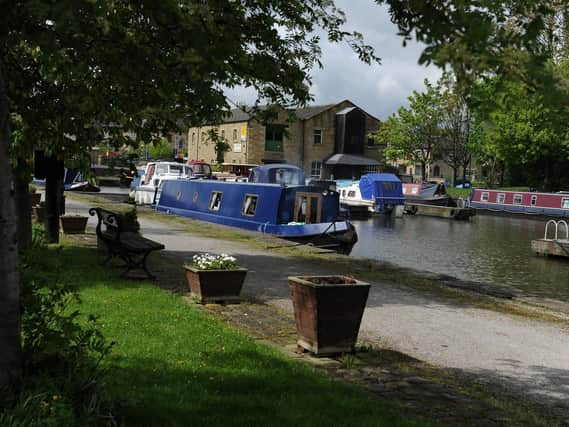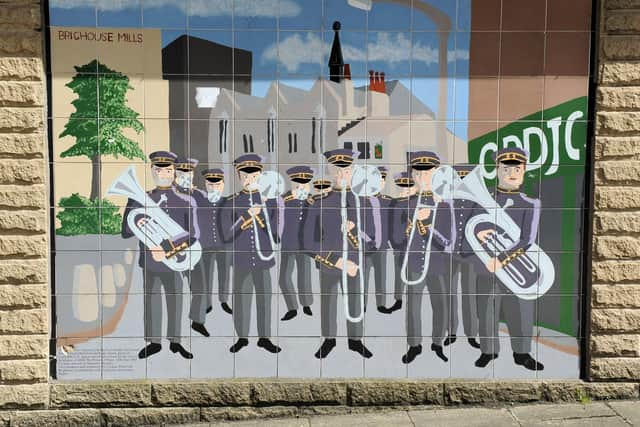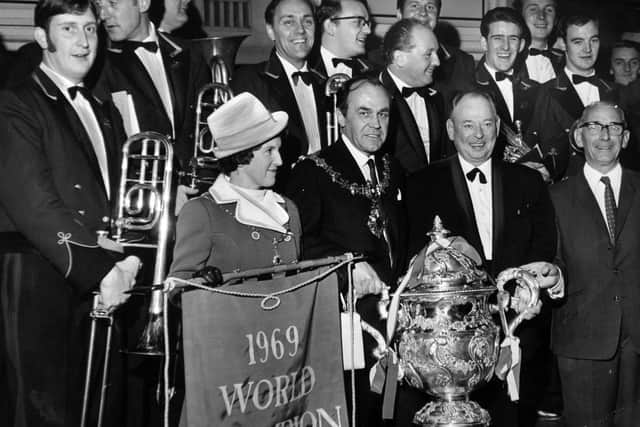How Brighouse was formed by brass, the Romans and the Calder & Hebble Navigation


Many Northern towns and cities saw concrete replace good solid stone, or interesting Victorian brick, during the obsessive “modernising” of the 1960s and 70s.
But you have to hand it to Brighouse for doing its darnedest to preserve some of its best assets. Take, for example, St James’ Church, which was a chapel-of-ease associated with the town’s parish church, St Martin’s.
Advertisement
Hide AdAdvertisement
Hide AdIt was built in 1870 and was opened to accommodate a growing number of Church of England worshipers in the area. What made it remarkable was that the congregation demanded the very best – and when it came to installing stained-glass windows, they went right to the top.


They commissioned the eminent artist Edward Burne-Jones and his vivid designs were made at the William Morris factory. A century later, and the life of the church had run its course, and it was demolished to make way for housing. But rather than being destroyed, common sense and artistic spirit prevailed and they are now one of the chief attractions at the Cliffe Castle Museum in Keighley.
Brighouse – like so many other places – grew from being a river crossing.
The Romans were probably the first to adequately bridge the Calder, and many years later it was a link to the Calder & Hebble Navigation in 1757 (the M62 of the time) that gave the town industrial impetus and considerable clout – the textile industry took off, and so did milling.
Advertisement
Hide AdAdvertisement
Hide AdToday, some of the older buildings of the time have been converted into sought-after loft apartments. Leeds-born John Smeaton, “the father of civil engineering”, would be delighted that his work is still so highly valued and appreciated.


A profile of any Yorkshire community will always give glimpses of social history, the fads and fashions of the past, and Brighouse is no exception.
For some reason, during the Edwardian era, a craze for roller skating swept the nation.
The moment was seized by some local businessmen who constructed a purpose-built rink on the site of the old Atlas Mill. The venue, which opened in 1909, also hosted boxing matches.
Advertisement
Hide AdAdvertisement
Hide AdTwo years later and James Farnell Bunce took over, and converted the building into a cinema – with skating between the film screenings. It also changed names, from the Atlas Rink to the Palace Rink.
By 1917 it had become the Brighouse Empire which featured live performances from travelling variety acts, with films in the interval (as well as skating).
However, this enterprise didn’t last long and by the Armistice of the following year, the entire site in Atlas Mill Road had been cleared.
There is another local institution that fared rather better – the Brighouse and Rastrick Brass Band. The band itself also has a long and illustrious history. Formed in 1881 as the Brighouse and Rastrick Temperance Brass Band, the reference to sobriety was dropped in 1929.
Advertisement
Hide AdAdvertisement
Hide AdThe B&R has a global reputation, and in 1998 it became the only band to have held three prestigious titles in the same year, having triumphed in the All England Masters Championships, the National Championship of Great Britain and the European Championship.
It would seem that music pulses in the veins of Brighouse.
There’s everything from the indie and alternative rock band Embrace (who have a new album out this month) to Susan Sunderland, “the Calderdale Nightingale”. Born Susan Sykes in 1819, her father was a Brighouse butcher, and her soprano voice was discovered in her teens. She gave her first public concert, after tuition from the choirmaster of the parish church, at the age of 15. The choirmaster, by the way, was also the Brighouse blacksmith.
Susan married Henry Sunderland in 1838, and they had a long and happy marriage, with six children. In the early stages of her career, with no available public transport, Susan would walk to her various engagements – think of her tramping all the way to Halifax or Huddersfield, performing to a packed house, and then striding back to Brighouse afterwards. Which she often did.
She is commemorated every year in the Mrs Sunderland Music Festival. This remarkable woman appeared twice in front of Queen Victoria and local legend has it that at the end of one recital, Victoria said: “I may be the Queen of England, but you are the Queen of song.”
Advertisement
Hide AdAdvertisement
Hide AdIt would be wonderful if that story was true. Either way, there is no doubting her legacy. When Susan died in 1905, aged 86, she had enriched the lives of countless people and, indirectly, she still does.
If Queen Victoria knew a good voice when she heard one then her grandson George V had a very keen eye for detail when it came to recognising medals, honours and orders, especially when worn by servicemen.
On one occasion, lined up before him on a parade in Canada, he spotted a straight-backed 73-year-old, standing to attention.
The man in question, William Hall, was a former quartermaster who had joined the Royal Navy in 1849. Eight years later William, at the time an able seaman, found himself helping to relieve the Siege of Lucknow.
Advertisement
Hide AdAdvertisement
Hide AdHe had hauled guns up to the walls of the city as shells flew around him. As the fighting raged, he discovered that he and his commanding officer were the only two survivors left to aim and fire them.
Both fought bravely, and were later awarded the Victoria Cross. William was the first black man to win the VC, and the first Canadian. The future King had spotted that VC.
But what has all this got to do with Brighouse, you may ask?
Well, William later served on HMS Donegal for many years, for which it’s said he had great affinity. The ship was subsequently scrapped in 1925, and most of her timbers and panelling were shipped from Portsmouth to Brighouse, to be used in the rebuilding of the Prince of Wales pub.
Advertisement
Hide AdAdvertisement
Hide AdIn 2007, this pub changed its name to the Old Ship. It still stands today, on Bethel Street, looking like a mock Tudor building, a direct link to a brave sailor, and the most prestigious honour that can be awarded in the armed services.
It makes you wonder that had William ever visited his old ship’s new berth and had a pint, would he have remotely understood the broad Brighouse accent?